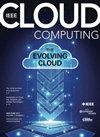When Edge Computing Meets Compact Data Structures
Q1 Computer Science
引用次数: 1
Abstract
Edge computing enables data processing and storage closer to where the data are created. Given the largely distributed compute environment and the significantly dispersed data distribution, there are increasing demands of data sharing and collaborative processing on the edge. Since data shuffling can dominate the overall execution time of collaborative processing jobs, considering the limited power supply and bandwidth resource in edge environments, it is crucial and valuable to reduce the communication overhead across edge devices. Compared with data compression, compact data structures (CDS) seem to be more suitable in this case, for the capability of allowing data to be queried, navigated, and manipulated directly in a compact form. However, the relevant work about applying CDS to edge computing generally focuses on the intuitive benefit from reduced data size, while few discussions about the challenges are given, not to mention empirical investigations into real-world edge use cases. This research highlights the challenges, opportunities, and potential scenarios of CDS implementation in edge computing. Driven by the use case of shuffling-intensive data analytics, we proposed a three-layer architecture for CDS-aided data processing and particularly studied the feasibility and efficiency of the CDS layer. We expect this research to foster conjoint research efforts on CDS-aided edge data analytics and to make wider practical impacts.当边缘计算遇到紧凑的数据结构
边缘计算使数据处理和存储更接近数据创建的位置。随着计算环境的高度分布式和数据分布的显著分散,对边缘数据共享和协同处理的需求日益增加。由于数据变换会支配协作处理作业的整体执行时间,考虑到边缘环境中有限的电源和带宽资源,降低边缘设备之间的通信开销至关重要且有价值。与数据压缩相比,紧凑的数据结构(CDS)似乎更适合这种情况,因为它允许以紧凑的形式直接查询、导航和操作数据。然而,将CDS应用于边缘计算的相关工作通常侧重于减少数据大小带来的直观好处,而很少讨论挑战,更不用说对现实世界边缘用例的实证调查了。本研究强调了CDS在边缘计算中实施的挑战、机遇和潜在场景。在洗刷密集型数据分析用例的驱动下,提出了一种CDS辅助数据处理的三层架构,并重点研究了CDS层的可行性和效率。我们期望这项研究能促进cds辅助边缘数据分析的联合研究,并产生更广泛的实际影响。
本文章由计算机程序翻译,如有差异,请以英文原文为准。
求助全文
约1分钟内获得全文
求助全文
来源期刊

IEEE Cloud Computing
Computer Science-Computer Networks and Communications
CiteScore
11.20
自引率
0.00%
发文量
0
期刊介绍:
Cessation.
IEEE Cloud Computing is committed to the timely publication of peer-reviewed articles that provide innovative research ideas, applications results, and case studies in all areas of cloud computing. Topics relating to novel theory, algorithms, performance analyses and applications of techniques are covered. More specifically: Cloud software, Cloud security, Trade-offs between privacy and utility of cloud, Cloud in the business environment, Cloud economics, Cloud governance, Migrating to the cloud, Cloud standards, Development tools, Backup and recovery, Interoperability, Applications management, Data analytics, Communications protocols, Mobile cloud, Private clouds, Liability issues for data loss on clouds, Data integration, Big data, Cloud education, Cloud skill sets, Cloud energy consumption, The architecture of cloud computing, Applications in commerce, education, and industry, Infrastructure as a Service (IaaS), Platform as a Service (PaaS), Software as a Service (SaaS), Business Process as a Service (BPaaS)
 求助内容:
求助内容: 应助结果提醒方式:
应助结果提醒方式:


